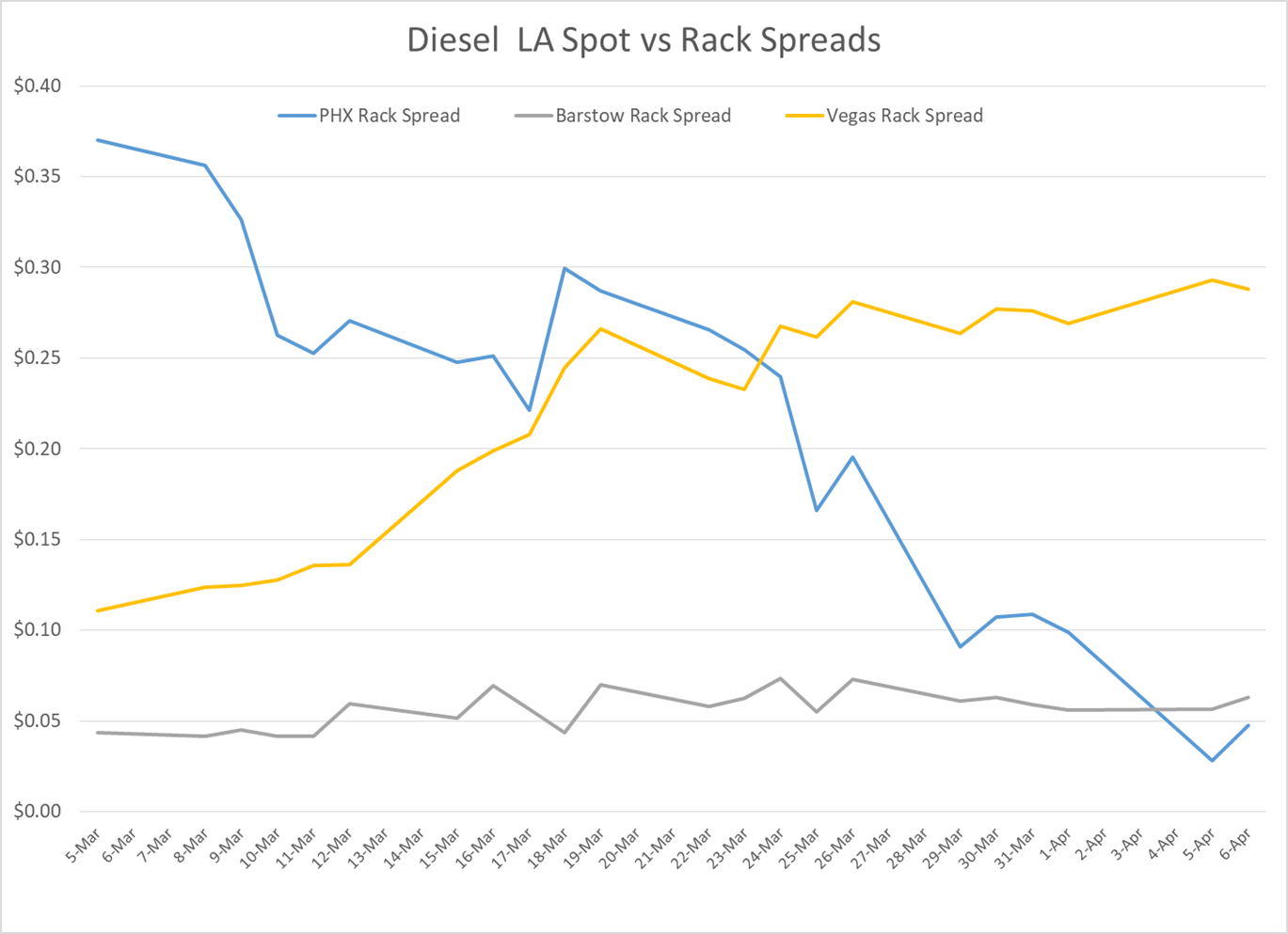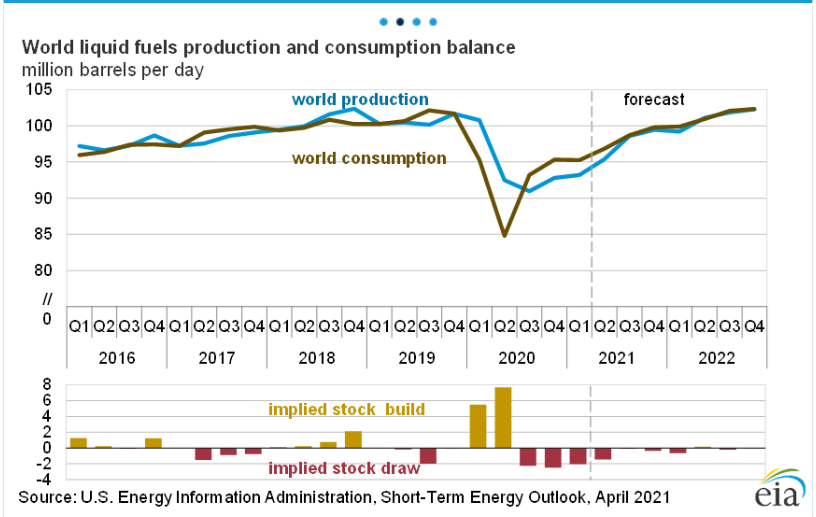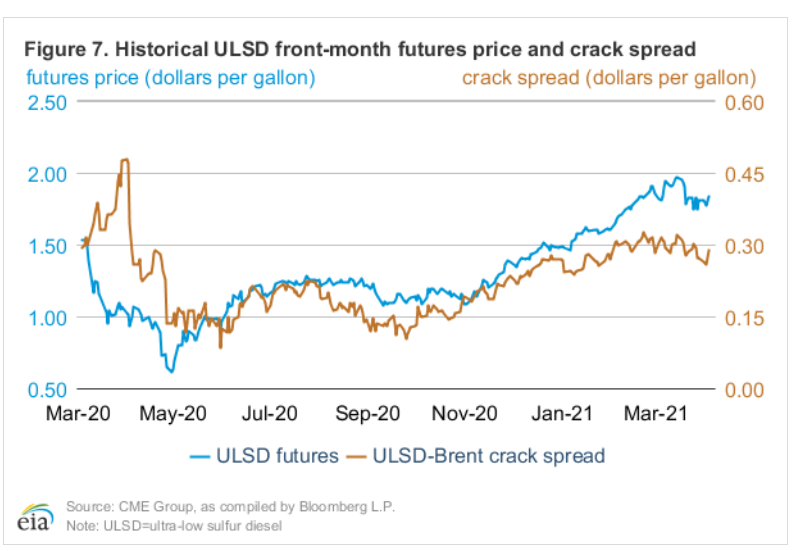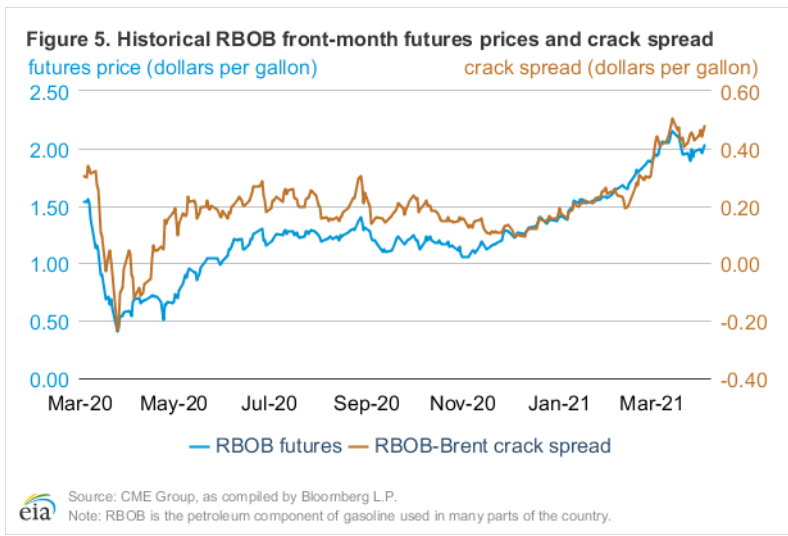Choppy Back And Forth Action Continues

Choppy back and forth action continues to be the theme for energy prices, but a late Tuesday sell-off after a strong morning has put the complex in danger of a breakdown that could push prices another 10% (or more) lower should chart support finally break. That said, we’ve seen prices test the bottom end of the trading range four times in the past three weeks and bounce each time, just as they seem to be doing so far this morning.
The weak close for refined products Tuesday that largely wiped out nickel+ gains earlier in the session looked prophetic two hours later in the afternoon when the API was reported to show large builds for gasoline and diesel inventories last week. The DOE’s weekly report is due out at its normal time this morning, with refinery runs still and gasoline demand estimates still must read data points.
The EIA released its short term energy outlook Tuesday, predicting that gasoline consumption will continue to rise through the summer driving season, but will fail to approach levels we saw in 2019. The report also predicts that U.S. crude oil output will steadily increase through 2022, but will remain nearly a million barrels/day below where we saw it prior to the pandemic.
After an extremely volatile couple of weeks, RINs have been relatively quiet so far this week, with both D4 and D6 values moving up “only” 2.5-3 cents the past two days. Meanwhile, there’s a new diva in the credit markets as California’s LCFS credits took a nosedive Tuesday, dropping $14/MT for some delivery timings before buyers stepped in, making the trading range for the day wider than it had been so far for the year. There was not any regulatory-type news to spark the move that pushed those credits to their lowest levels since last year’s lockdown first hit, but the selling was widespread across time frames, suggesting it may not be isolated to one large position being unwound, and there could be more downside ahead.
The spot/rack charts for ULSD below show the divergence in markets across the southwest following the extremely tight physical market in the region for most of the past two months. El Paso and Phoenix markets are now back hovering around break-even levels for shipping economics, while chronically constrained Las Vegas and Albuquerque are still seeing wide spreads as the pipelines that supply those locations just aren’t able to keep up.
Click here to download a PDF of today's TACenergy Market Talk.
News & Views
View All
Crude Oil, Gasoline, And Diesel Benchmarks Are All Trading >1% Lower To Start The Day
Energy prices are sinking again this morning, albeit with a little more conviction than yesterday’s lackadaisical wilting. Crude oil, gasoline, and diesel benchmarks are all trading >1% lower to start the day with headlines pointing to an across-the-board build in national inventories as the source for this morning’s bearish sentiment. The Department of Energy’s official report is due out at its regular time this morning (9:30am CDT).
WTI has broken below its 100-day moving average this morning as it fleshed out the downward trend that began early last month. While crossing this technical threshold may not be significant in and of itself (it happened multiple times back in February), the fact that it coincides with the weekly and monthly charts also breaking below a handful of their respective moving averages paints a pretty bearish picture in the short term. The door is open for prices to drop down to $75 per barrel in the next couple weeks.
Shortly after the EIA’s weekly data showed U.S. commercial crude inventories surpassing 2023 levels for the first time this year, their monthly short-term energy outlook is forecasting a fall back to the bottom end of the 5-year range by August due to increasing refinery runs over the period. However, afterward the administration expects a rise in inventories into 2025, citing continued production increases and loosening global markets hindering the incentive to send those excess barrels overseas. The agency also cut back their average gas and diesel price forecasts for the first time since February with the biggest reductions in the second and third quarter of this year.
The STEO also featured their famed price prediction for WTI, stating with 95% confidence that the price for crude oil will be between $40 and $140 through 2026.
Need a general indication of the global crude oil supply? Most headlines seem to be covering a shortage of a different type of oil, one that we haven’t turned into fuel (yet).
Click here to download a PDF of today's TACenergy Market Talk.

The Perceived Cooling Of Regional Tensions In The Middle East Area Attributing To The Quiet Start To Today’s Trading Session
The energy complex is drifting lower this morning with RBOB futures outpacing its counterparts, trading -.9% lower so far to start the day. The oils (WTI, Brent, heating) are down only .2%-.3% so far this morning.
The perceived cooling of regional tensions in the Middle East area attributing to the quiet start to today’s trading session, despite Israel’s seizure of an important border crossing. A ceasefire/hostage-release agreement was proposed Monday, and accepted by Hamas, but rejected by Israel as they seemingly pushed ahead with their Rafah offensive.
U.S. oil and natural gas production both hit record highs in 2023 and continue to rise in 2024, with oil output currently standing at 13.12 million barrels per day and January 2024 natural gas production slightly exceeding the previous year. With WTI currently changing hands at higher than year-ago levels, this increased production trend is expected to continue despite a decrease in rigs drilling for these resources.
Less than a week after the Senate Budget Committee’s hearing centered on the credibility of big oil’s climate preservation efforts, a major oil company was reported to have sold millions of carbon capture credits, without capturing any carbon. Fraud surrounding government subsidies to push climate-conscious fuel initiatives is nothing new, on a small scale, but it will be interesting to see how much (if any) of the book is thrown at a major refiner.
Today’s interesting read: sourcing hydrogen for refining.
Click here to download a PDF of today's TACenergy Market Talk.

Energy Contracts Are Trying To Find A Floor After Taking Their Largest Weekly Losses Of The Year So Far Last Week
Energy contracts are trying to find a floor after taking their largest weekly losses of the year so far last week.
There’s not much in the way of news yet this morning, so the modest buying is largely being blamed on reports that Saudi Arabia raised its prices for Asian and Mediterranean buyers in June, signaling that demand is strong enough in those markets to shoulder the increase.
RBOB gasoline futures have already dropped 28 cents from the high set April 12th, leading the argument that prices have peaked for the season. The 200-day moving average comes in just under $2.50/gallon this week, some 6.5 cents below current values, and helps set a pivotal chart support layer. If prices break there, there’s a strong case that we’ll see another 20-30 cents of downside, similar to what we saw this time last year.
Money managers continued to reduce their net length in NYMEX contracts last week, as WTI, RBOB and ULSD saw a net decrease of more than 17,000 contracts of speculative length. The hedge fund liquidation seems to have run its course for this latest news cycle however, as new short positions accounted for the majority of the decrease, and WTI and Brent both saw new length added by the big speculators. Money managers are now net-short on ULSD, which could be another reason to think the bottom is near if you subscribe to the theory that the bandwagon-jumping hedge funds usually are wrong.
Baker Hughes reported a decline of 7 oil rigs and 3 natural gas rigs last week, bringing the combined total rig count to its lowest level in more than 2 years. Perhaps most noteworthy in this week’s report was that Alaska saw 5 of its 14 active rigs taken offline in just 1 week. It’s not yet clear if this may have anything to do with the startup of the transmountain pipeline which will have Western Canadian crude now competing more directly with Alaskan grades.
Click here to download a PDF of today's TACenergy Market Talk.








